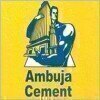Civil Engineer
90+ Civil Engineer Interview Questions and Answers for Freshers
Asked in United Cements

Q. What components are used to prepare cement?
Cement is made up of four main components: limestone, clay, gypsum, and iron ore.
Limestone provides calcium oxide, which reacts with silica and alumina to form the cement's primary ingredient, calcium silicate.
Clay provides silica, alumina, and iron oxide, which are necessary for the formation of cement clinker.
Gypsum is added to regulate the setting time of the cement.
Iron ore is used as a source of iron oxide, which gives the cement its characteristic grey color.

Asked in Dhampur Sugar Mills

Q. How do you prepare a Bill of Quantities (BOQ) for a large construction project?
To make a BOQ for larger construction work, one must accurately estimate quantities of materials and labor required for each aspect of the project.
Break down the project into smaller components such as foundation, superstructure, finishes, etc.
Calculate the quantities of materials needed for each component based on the project drawings and specifications.
Estimate the labor hours required for each component based on the complexity of the work and productivity rates.
Use unit ra...read more

Asked in ARCADIS

Q. How is digitization affecting the industry?
Digitization is revolutionizing the civil engineering industry.
Digitization is streamlining project management and increasing efficiency.
Virtual and augmented reality are being used for design and visualization.
Building Information Modeling (BIM) is becoming more prevalent.
Drones and other autonomous vehicles are being used for surveying and inspection.
Data analytics and machine learning are being used for predictive maintenance and asset management.

Asked in Mahindra & Mahindra

Q. What is column testing?
Column testing is a process of evaluating the strength and stability of columns used in construction.
Column testing involves conducting various tests to determine the load-bearing capacity, deflection, and behavior of columns.
Common tests include compression tests, flexural tests, and shear tests.
The results of column testing help engineers ensure that columns meet design specifications and can safely support the intended loads.
For example, a civil engineer may perform column...read more

Asked in Mahindra & Mahindra

Q. What is the cost of the slab?
The cost of a slab depends on various factors such as size, thickness, materials used, and labor costs.
The size of the slab affects the cost as larger slabs require more materials and labor
The thickness of the slab also affects the cost as thicker slabs require more materials and labor
The type of materials used for the slab affects the cost as some materials are more expensive than others
Labor costs vary depending on the location and experience of the workers
Additional costs ...read more

Asked in Oasis Partners Asia

Q. What do you know about the bar bending schedule?
Bar bending schedule is a document that provides details of reinforcement steel bars, their shape, size, length, and quantity required for construction.
It is prepared by a civil engineer or a structural engineer
It helps in estimating the total quantity of steel required for a construction project
It provides details of the shape, size, and length of each steel bar
It helps in reducing wastage of steel and saves cost
It is an important document for contractors and construction wo...read more
Civil Engineer Jobs




Asked in Ambuja Cements

Q. What is a slump test?
Starter testing is the initial phase of testing in civil engineering projects.
Starter testing is conducted at the beginning of a project to assess the feasibility and viability of the proposed design.
It involves conducting preliminary tests on materials, soil, and site conditions to gather data for further analysis.
The results of starter testing help in making informed decisions regarding the design, construction methods, and project timeline.
Examples of starter testing inclu...read more
Asked in Kadyan Enterprises

Q. What is the schedule for a new site start?
The plan schedule for new site start is currently being finalized.
The schedule will depend on various factors such as site preparation, permits, and availability of resources.
A detailed project plan will be created to ensure timely completion of the project.
Regular updates will be provided to stakeholders to keep them informed of any changes or delays.
The schedule will be reviewed and adjusted as necessary to ensure that the project stays on track.
The start date will be commu...read more
Share interview questions and help millions of jobseekers 🌟


Asked in UltraTech Cement

Q. What are the types of cement?
There are different types of cement used in construction such as Ordinary Portland Cement, Rapid Hardening Cement, etc.
Ordinary Portland Cement (OPC)
Rapid Hardening Cement (RHC)
Low Heat Cement (LHC)
Sulfate Resistant Cement (SRC)
Portland Pozzolana Cement (PPC)
White Cement
Colored Cement

Asked in Jubilant Foods Works

Q. What is the standard concrete cover for columns?
General column covers are used to protect and enhance the appearance of structural columns in buildings.
General column covers are typically made of materials such as metal, stone, or composite materials.
They are used to provide a decorative finish to columns, hiding any imperfections or structural elements.
Column covers can also serve as a protective barrier, preventing damage from environmental factors or accidental impacts.
They come in various shapes, sizes, and designs to ...read more
Asked in Platicon Construction

Q. How many types of gravel are there?
There are several types of gravel used in civil engineering projects.
Gravel is classified based on its size and shape.
Common types of gravel include crushed stone, pea gravel, and bank gravel.
Crushed stone is the most common type and is used for road construction and drainage systems.
Pea gravel is smaller and smoother, often used for landscaping and playgrounds.
Bank gravel is a mix of sand and small stones, commonly used for driveways and walkways.

Asked in Rohan Builders

Q. What does a civil engineer do?
A civil engineer is a professional who designs, constructs, and maintains infrastructure projects.
Civil engineers are responsible for designing and overseeing the construction of buildings, bridges, roads, and other infrastructure.
They use their knowledge of mathematics, physics, and engineering principles to create safe and functional structures.
Civil engineers also assess the environmental impact of projects and ensure compliance with regulations.
They work closely with arch...read more

Asked in India Glycols

Q. What is back bearing?
Back bearing is the opposite direction of a forward bearing.
Back bearing is the bearing taken in the opposite direction of a forward bearing.
It is used in surveying to determine the direction from a point back to a previous point.
Back bearing is measured in degrees clockwise from the north or south direction.
It is commonly used in traversing and resection calculations.
For example, if the forward bearing from point A to point B is 45 degrees, the back bearing from point B to p...read more

Asked in Tata Projects

Q. What is Civil Engineering?
Civil engineering is a branch of engineering that deals with the design, construction, and maintenance of infrastructure projects.
Involves designing and constructing buildings, bridges, roads, dams, and other structures
Focuses on ensuring structures are safe, functional, and sustainable
Requires knowledge of materials, construction techniques, and project management
Involves collaboration with architects, contractors, and government agencies
Examples include designing a new high...read more
Asked in Hardik Construction

Q. How do you control the quality of materials?
Quality control of materials is ensured through various tests and inspections.
Establishing quality standards and specifications
Conducting regular inspections and tests
Maintaining proper documentation of test results
Rejecting materials that do not meet the standards
Ensuring proper storage and handling of materials
Training personnel on quality control procedures

Asked in Mahindra & Mahindra

Q. What is slab testing?
Slab testing is the process of evaluating the strength and durability of concrete slabs.
Slab testing involves taking samples of concrete from the slab and subjecting them to various tests to determine their properties.
These tests may include compressive strength testing, flexural strength testing, and moisture content testing.
Slab testing is important to ensure that the concrete used in the slab is of sufficient quality to withstand the loads and stresses it will be subjected...read more

Asked in Mahindra & Mahindra

Q. What is the slab area?
Slab area refers to the total area of a concrete slab used in construction.
Slab area is calculated by multiplying the length and width of the slab.
It is important to accurately calculate the slab area to determine the amount of materials needed for construction.
Slab area can vary depending on the design and purpose of the structure.
For example, the slab area of a residential building will be different from that of a commercial building.
Asked in Aquaplast Infraprojects

Q. What is the slump test?
Starter testing is the initial testing done to ensure that the system is ready for further testing.
Starter testing is done to identify any major issues or defects in the system before proceeding with further testing.
It includes basic tests like installation testing, configuration testing, and compatibility testing.
Starter testing helps in reducing the overall testing time and cost by identifying issues early on.
For example, in software testing, starter testing may involve che...read more
Asked in Neeraj Construction

Q. How can you contribute to the country's growth as a civil engineer?
As a civil engineer, I can contribute to sustainable infrastructure, economic development, and community resilience for national growth.
Design and implement sustainable infrastructure projects, such as renewable energy facilities, to reduce environmental impact.
Enhance transportation networks, like roads and bridges, to improve connectivity and boost trade and commerce.
Develop water management systems to ensure access to clean water, which is essential for public health and a...read more
Asked in Shirke Recreation Enterprise

Q. What is your experience with estimation and costing in civil engineering projects?
Estimating and costing in civil engineering involves calculating project costs and resource requirements for effective budgeting.
Understand project scope: Define the work required for the project.
Material estimation: Calculate quantities of materials needed, e.g., concrete, steel.
Labor costs: Estimate the number of labor hours required and their rates.
Equipment costs: Include costs for machinery and tools needed for construction.
Contingency planning: Allocate a percentage of ...read more

Asked in The 3 Arrows Nirman

Q. What are the responsibilities of a billing engineer?
Billing Engineer is responsible for preparing and submitting invoices for construction projects.
Preparing and submitting invoices for construction projects
Ensuring accuracy of billing information
Tracking project expenses and costs
Collaborating with project managers and clients
Resolving billing discrepancies
Maintaining billing records and reports

Asked in Sobha

Q. How do you calculate the weight of steel?
Steel weight can be calculated using the formula: weight = density x volume.
Determine the density of the steel being used
Calculate the volume of the steel
Multiply the density by the volume to get the weight
Density of mild steel is 7850 kg/m³
Example: Weight of a steel plate with dimensions 1m x 2m x 0.02m = 7850 x 0.04 = 314 kg

Asked in J. Kumar Infraprojects

Q. What is the bearing capacity of soil?
Bearing capacity of soil is the maximum load that can be applied on the soil without causing any shear failure.
It is an important factor in designing foundations for structures.
It depends on the type of soil, its density, and moisture content.
It is determined by conducting soil tests such as Standard Penetration Test (SPT) and Cone Penetration Test (CPT).

Asked in Arvind Smartspaces Limited

Q. What is the purpose of applying plaster?
Plaster is applied to surfaces for protection, aesthetics, and to create a smooth finish for walls and ceilings.
Provides a smooth and even surface for painting or wallpapering.
Protects underlying materials from moisture and damage.
Improves the aesthetic appeal of walls and ceilings.
Can be used to create decorative finishes, such as moldings or textures.
Acts as a fire-resistant barrier in certain applications.
Asked in Sri Lalitha Earth Movers

Q. How do you calculate building measurements?
Building measurements can be calculated using various methods and tools.
Measurements can be calculated using surveying techniques such as triangulation and traversing.
Building dimensions can be determined using measuring tapes, laser distance meters, or total stations.
Calculations may involve determining lengths, widths, heights, angles, and areas of different building components.
Blueprints and architectural drawings provide valuable information for calculating building measu...read more

Asked in Aarvi Encon

Q. What year did you complete your diploma, and what was your percentage?
I completed my diploma in Civil Engineering with a focus on structural design, achieving a percentage of 85%.
Completed diploma in Civil Engineering from XYZ Institute.
Achieved a percentage of 85%, demonstrating strong academic performance.
Focused on subjects like Structural Analysis and Geotechnical Engineering.
Participated in various projects, including a bridge design competition.
Asked in Vision Buildcare

Q. Are you familiar with AutoCAD drafting?
Yes, I am proficient in Autocad Drafting.
I have experience creating detailed drawings and plans using Autocad software.
I am skilled in 2D and 3D drafting, as well as creating technical drawings for construction projects.
I have used Autocad to design structural elements, floor plans, and site layouts.
I am familiar with layering, dimensioning, and annotation tools in Autocad.
Asked in Anika

Q. What are the basic features of AutoCAD?
AutoCAD is a powerful CAD software used for 2D and 3D design, drafting, and modeling in various engineering fields.
User-friendly interface: Simplifies navigation and design processes.
Layer management: Organizes different elements of a drawing for clarity.
Precision drawing tools: Includes lines, arcs, circles, and polylines for accurate designs.
3D modeling capabilities: Allows for the creation of complex 3D structures and visualizations.
Annotation tools: Provides text, dimensi...read more

Asked in Suroj Buildcon

Q. Work of Autocad in civil engineering
AutoCAD is a software used in civil engineering for creating and editing 2D and 3D designs of buildings, infrastructure, and construction projects.
AutoCAD is used for drafting and designing architectural plans, structural layouts, and electrical and plumbing systems.
It allows civil engineers to create accurate and detailed drawings, including floor plans, elevations, sections, and site plans.
AutoCAD enables engineers to analyze and simulate the behavior of structures, perform...read more

Asked in Larsen & Toubro Limited

Q. What are the different grades of concrete?
The grade of concrete refers to its strength and is determined by the ratio of cement to sand to aggregate.
The grade of concrete is typically denoted by a number followed by the letter 'M', such as M20, M30, etc.
The number in the grade represents the compressive strength of the concrete in megapascals (MPa) after 28 days of curing.
For example, M20 concrete has a compressive strength of 20 MPa, while M30 concrete has a compressive strength of 30 MPa.
Higher grade concrete (e.g....read more
Interview Questions of Similar Designations
Interview Experiences of Popular Companies






Calculate your in-hand salary
Confused about how your in-hand salary is calculated? Enter your annual salary (CTC) and get your in-hand salary


Reviews
Interviews
Salaries
Users










